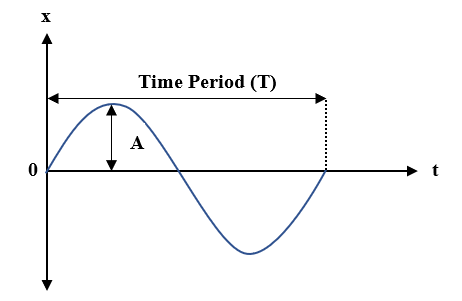Question
Question: The amplitude of SHM \(y= 2(\sin{5 \pi t}+ \sqrt{2} \cos{\pi t})\) is...
The amplitude of SHM y=2(sin5πt+2cosπt) is
Solution
Simple Harmonic Motion is the motion of an object which is moving back and forth along a straight line. The amplitude of a SHM can be defined as the maximum displacement of a particle from its mean position. To solve this problem, use the standard equation of SHM. Compare this standard equation with the equation given in the question. After comparing the equations, take the magnitude of obtained amplitudes. This obtained value will be the amplitude of SHM.

Complete step by step answer:
Given: y=2(sin5πt+2cosπt)
⇒y=2sin5πt+22cosπt …(1)
The standard equation of SHM i.e. Simple Harmonic Motion is given by,
y=A1sinωt+A2cosωt …(2)
Comparing equation. (1) and equation. (2) we get,
A1=2 and A2=22
Now, amplitude is given by,
A=A12+A22
Substituting values in above equation we get,
A=22+(22)2
⇒A=4+8
⇒A=12
⇒A=23
∴A=3.46cm
Hence, the amplitude of SHM y=2(sin5πt+2cosπt) is 3.46cm.
Note:
Students should remember that the wave equation of Simple Harmonic Motion (SHM) contains all the information regarding the state of the wave. Using the equation, we can find wavelength, frequency, amplitude and phase. We can also find the position and momentum of the particle performing SHM. At all positions of oscillation, the particle has the same energy i.e. the energy of the particle remains constant throughout the oscillation. It is given by,
E=21mAω2
Where A is the amplitude
ω is the angular frequency
